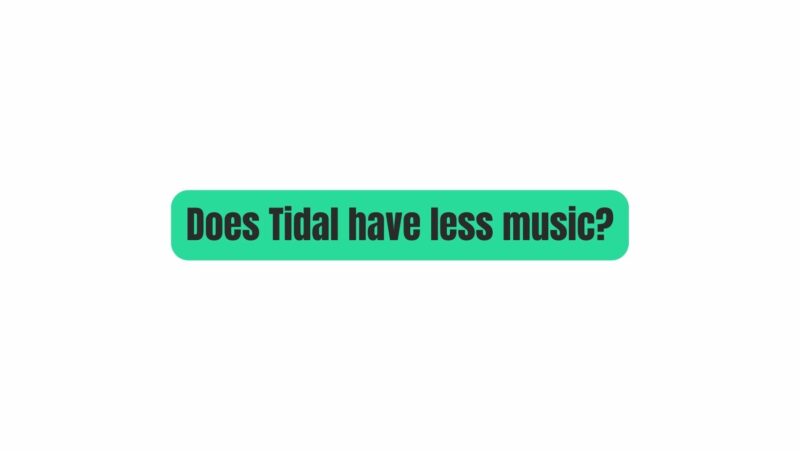Spotify, one of the world’s leading music streaming platforms, has consistently evolved to provide its users with the best possible listening experience. One significant aspect of this evolution has been the introduction of higher audio quality options, specifically the choice between 24-bit and 16-bit audio. But what do these bit-depth options mean, and which one is right for you? In this article, we will delve into the world of audio quality, examining the differences between 24-bit and 16-bit audio on Spotify and helping you decide which option best suits your preferences.
- Understanding Bit Depth
Before we explore the differences between 24-bit and 16-bit audio on Spotify, let’s take a moment to understand what bit depth actually means in the context of digital audio:
- Bit Depth: Bit depth, expressed in bits, is a measure of the precision of each audio sample. It determines the dynamic range and the number of possible values each sample can have. In simpler terms, it defines the level of detail in an audio file.
- Spotify’s Audio Quality Options
Spotify offers several audio quality settings to cater to different user preferences and network conditions. Two of the main settings that users can choose from are 24-bit and 16-bit audio. Here’s a closer look at each:
- 24-bit Audio: Spotify’s 24-bit audio option offers a higher bit depth, resulting in more detailed and accurate audio reproduction. It is often associated with the term “high-fidelity” or “HiFi” audio. This setting is available to Spotify Premium subscribers who choose to enable it.
- 16-bit Audio: The 16-bit audio setting is the standard quality level for most Spotify users. It provides good audio quality but with a lower bit depth compared to the 24-bit option. It is suitable for streaming over a wide range of network conditions, making it the default choice for many users.
- The Advantages of 24-bit Audio
Now, let’s explore the advantages of choosing 24-bit audio quality on Spotify:
- Higher Precision: 24-bit audio offers significantly higher precision compared to 16-bit audio. This means that it can capture more subtle nuances in the music, such as the decay of a piano note or the subtle texture in a singer’s voice.
- Wider Dynamic Range: A wider dynamic range allows 24-bit audio to handle both very soft and very loud sounds with greater accuracy. This can result in a more lifelike and immersive listening experience.
- Reduced Quantization Noise: Higher bit depth reduces quantization noise, which can be particularly noticeable in quiet passages of music. This results in a cleaner and more transparent sound.
- Ideal for Audiophiles: Audiophiles and music enthusiasts who demand the highest level of audio quality often prefer 24-bit audio for its ability to faithfully reproduce the original recording.
- The Benefits of 16-bit Audio
While 24-bit audio offers undeniable advantages, 16-bit audio has its own set of benefits:
- Wide Compatibility: 16-bit audio is widely supported across various devices and platforms. It’s the default choice for streaming and ensures compatibility with a wide range of playback equipment.
- Lower Data Usage: 16-bit audio files are smaller in size compared to 24-bit files. This results in lower data usage when streaming music, making it more suitable for users with limited data plans.
- Optimal for Mobile Streaming: When streaming music on mobile devices over cellular networks, 16-bit audio can offer a smoother and more reliable listening experience, especially in areas with poor network coverage.
- Suitable for Everyday Listening: For many listeners, 16-bit audio quality is more than sufficient for everyday music consumption. It strikes a balance between quality and practicality.
- Choosing the Right Option for You
The decision between 24-bit and 16-bit audio on Spotify ultimately comes down to your preferences and listening environment:
- Choose 24-bit if:
- You are an audiophile or a music enthusiast who prioritizes the highest audio quality.
- You have high-quality audio equipment, such as high-end headphones or a high-fidelity speaker system.
- You primarily listen to music in a controlled and quiet environment that allows you to appreciate the nuances of 24-bit audio.
- Choose 16-bit if:
- You are a casual listener who values convenience and wider device compatibility.
- You often stream music on mobile devices or in areas with limited network coverage.
- You have limited data bandwidth or are concerned about data usage.
- Spotify Connect and Local Files
It’s important to note that the choice between 24-bit and 16-bit audio quality primarily affects the streaming quality of songs from Spotify’s catalog. When it comes to Spotify Connect and playing local audio files, the quality may vary depending on your playback device’s capabilities.
- Conclusion
Spotify’s offer of 24-bit and 16-bit audio quality options reflects its commitment to providing users with choices that suit their preferences and circumstances. Both options have their merits, with 24-bit audio offering greater precision and fidelity, while 16-bit audio provides wider compatibility and lower data usage.
Ultimately, the choice between 24-bit and 16-bit audio quality on Spotify should align with your listening habits, equipment, and priorities. Whichever option you choose, Spotify’s commitment to delivering a high-quality listening experience remains a cornerstone of its service, ensuring that users can enjoy their favorite music in the way that suits them best.

